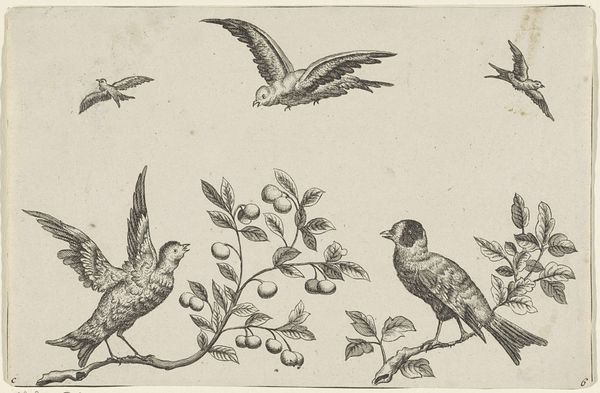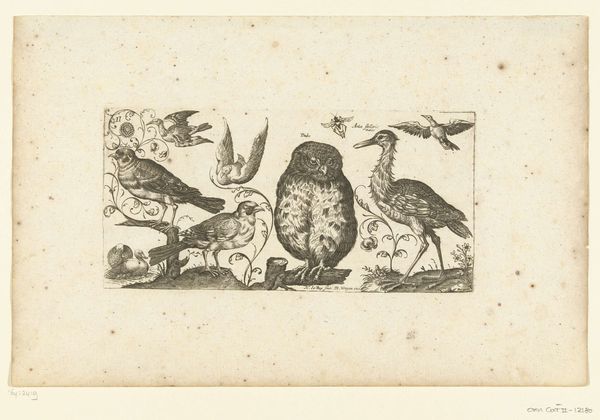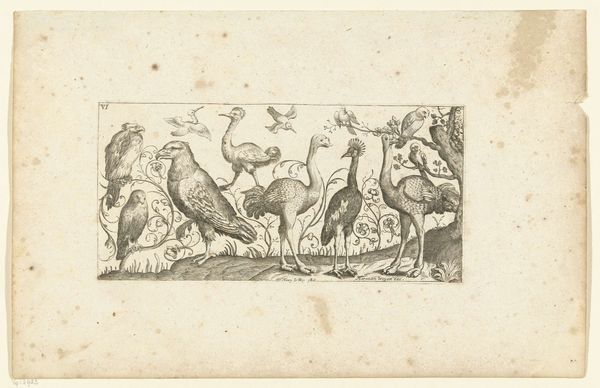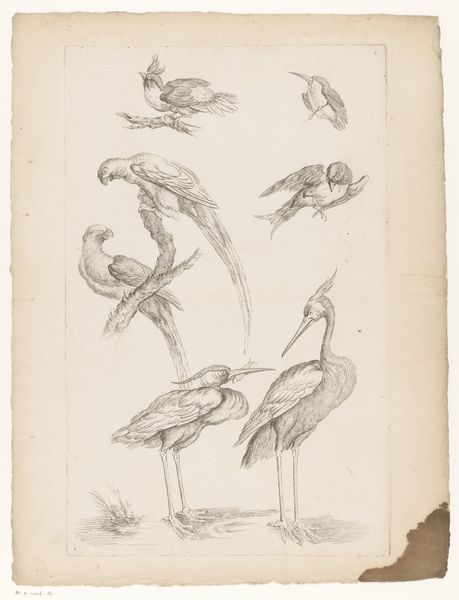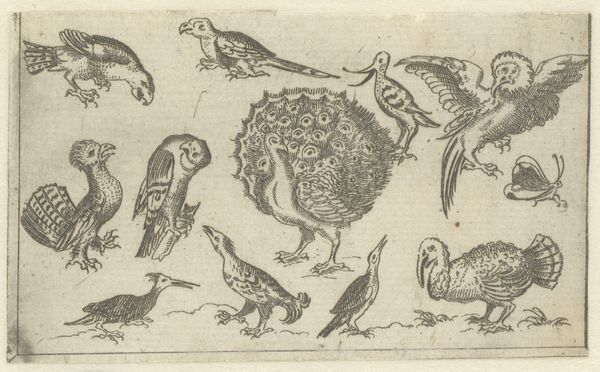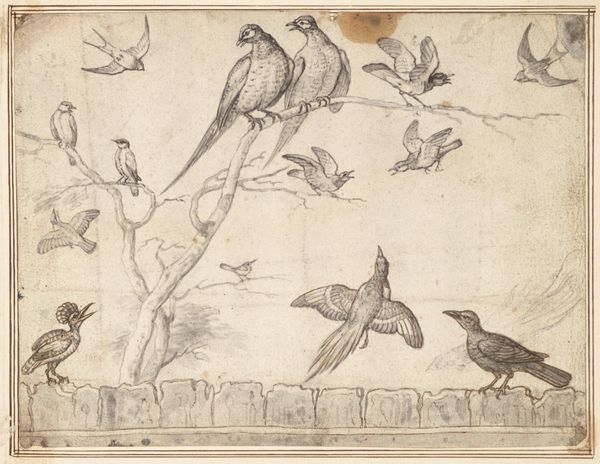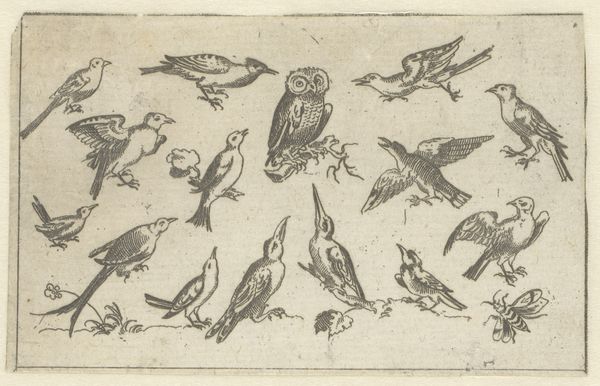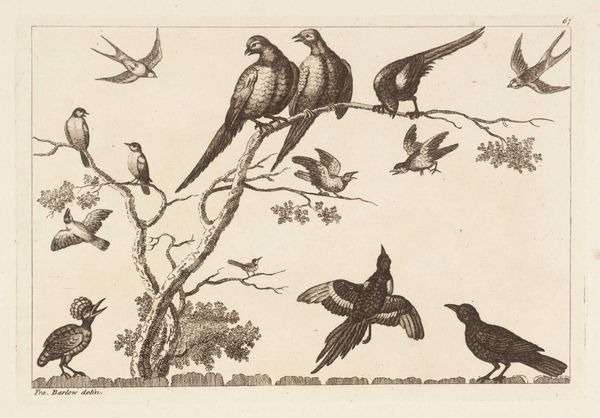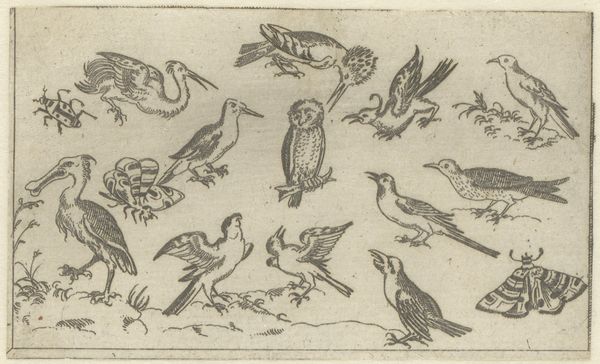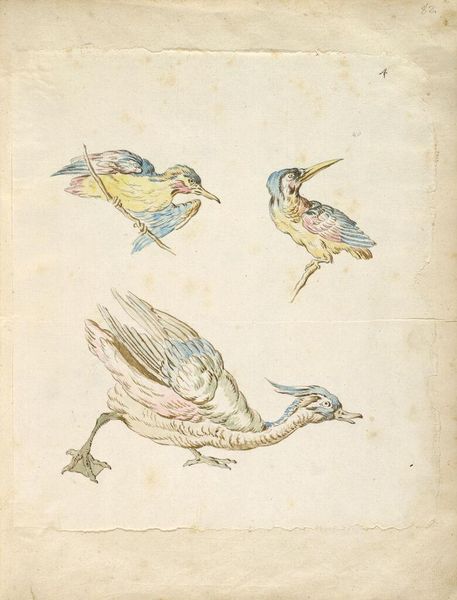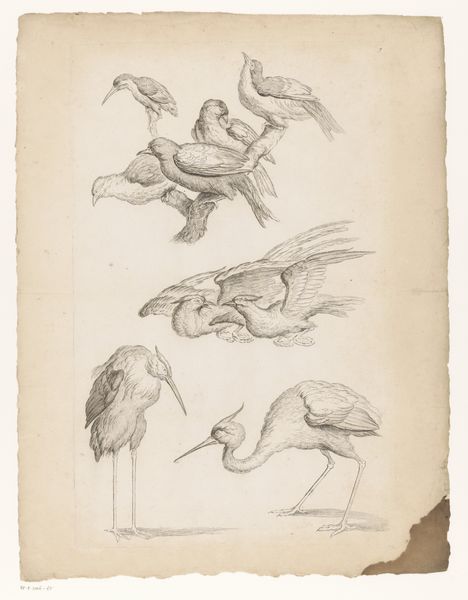
Twee vogels op een tak, een vogel op een stronk en twee vlinders 1675 - 1711
0:00
0:00
pieterschenk
Rijksmuseum
drawing, print, etching, ink
#
drawing
#
baroque
# print
#
etching
#
landscape
#
figuration
#
ink
Dimensions: height 144 mm, width 216 mm
Copyright: Rijks Museum: Open Domain
Curator: Before us, we have Pieter Schenk’s delicate etching, “Twee vogels op een tak, een vogel op een stronk en twee vlinders,” dating roughly from 1675 to 1711. It’s a beautiful example of baroque printmaking held here at the Rijksmuseum. Editor: My first thought is that it is almost deceptively simple. It presents a pastoral scene of calm observation, but there's a real formal tension—it's a precisely arranged display of life held static. Curator: Precisely. While seemingly a straightforward natural depiction, Schenk utilizes precise symbolic language here. Birds, of course, are often associated with the soul, messengers between earth and heaven. Note how one bird sings towards the sky from its tree stump perch, in hopeful ascent. The branch with fruit— Editor: Yes, and the butterflies flitting below offer additional, layered meaning. In many traditions, butterflies are also seen as symbols of transformation and immortality. Their presence transforms the entire landscape narrative from a scene to contemplate a single moment into a cycle. Curator: I agree. The careful attention to detail—look at the textures created purely with line in the wings of those insects, or each feathered friend perched perfectly on fruited branches—invites us into a world of metaphorical richness. I see echoes here in folk art’s representation of the soul in flight towards a place beyond earthly constraint, like dreams or memory. Editor: Perhaps, though for me it reveals more about our contemporary understanding of ecology in tension. We still expect displays like this to carry a hopeful narrative, however we understand there are broader social conditions at stake for ecological futures beyond each being's ability to 'ascend.' It's like this moment could erupt at any moment, but our relationship with ecology asks us not to leave these possibilities unspoken. Curator: That's a compelling way to look at the work. It is truly a microcosm of life’s bigger rhythms, I think, as it mirrors our relationship with the symbolic life-force surrounding it. Editor: Indeed. We see our anxieties reflected in it—then and now—reminding us of the beauty and precariousness that is the ongoing tension between individual experiences and collective, generational experiences.
Comments
No comments
Be the first to comment and join the conversation on the ultimate creative platform.
